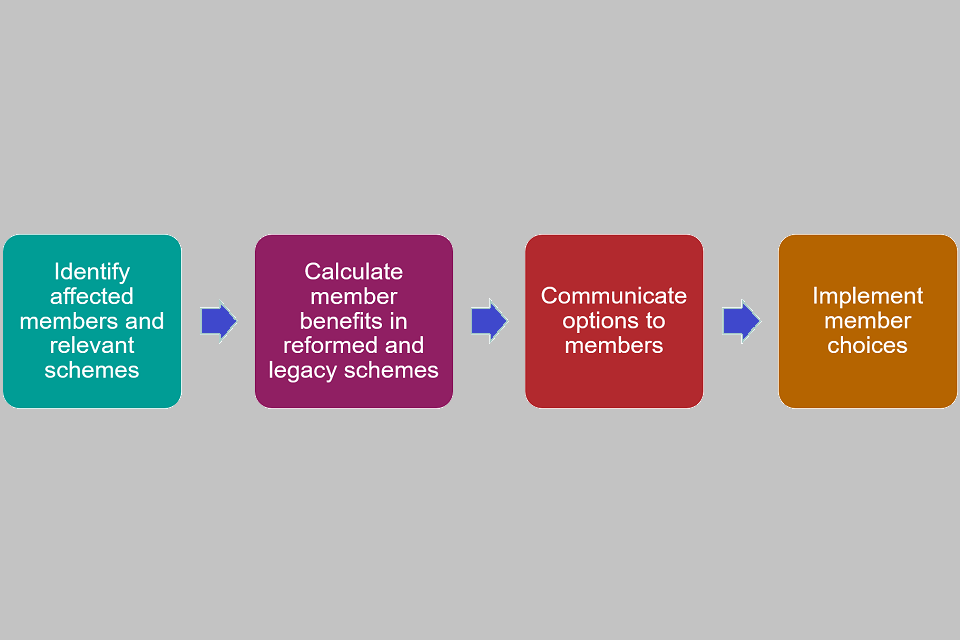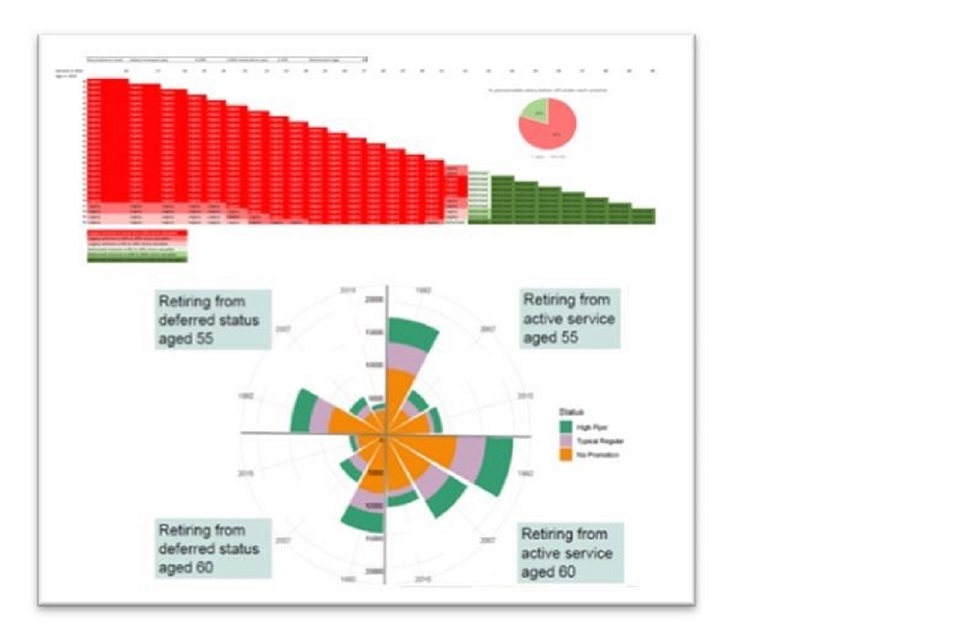In 2018 the Court of Appeal ruled that the transitional protection provisions in the government’s 2015 public service pension reforms were discriminatory. This ruling is commonly known as the McCloud judgment and the government is currently consulting on options to remedy this.
As advisers to all the main public service schemes, GAD has provided support in navigating this complex situation. This will continue throughout the remedy design and implementation processes, helping ensure the discrimination will be ultimately remedied.
How we got here
Public service pension schemes were reformed following the final report of the Independent Public Service Pensions Commission in 2011. New career-average revalued earnings schemes were put in place from April 2015.
Pension scheme members who were within 10 years of their scheme’s ‘normal pension age’ in 2012 qualified for transitional protection. This meant they continued to build up benefits in legacy final salary schemes. Some schemes also provided ‘tapered protection’ for members who were slightly more than 10 years from their normal pension age.
Following claims brought by judges and firefighters, in December 2018 the Court of Appeal ruled that transitional protection was unlawful on the grounds of age discrimination. The Courts required that this unlawful discrimination be remedied by the government.
In response, the government announced its intention to remedy the difference in treatment across all the main public service pension schemes. The government is currently consulting on options to achieve this. While some scheme specific consultations are taking place, the majority of schemes are covered by HM Treasury’s consultation.
stock image of parties reaching agreement
Consultation process
The current consultations form an important step towards addressing the discrimination. They set out the government’s plans for remedy and seek views from members, unions and other stakeholders.
These views will aid the government in designing a final remedy approach to discrimination and ensure fair outcomes for affected members. GAD has supported many schemes throughout the consultation process, for example GAD’s support for the LGPS consultation.
Remedy goal – a member choice
Under each of the 2 options set out in HM Treasury’s consultation, members will be able to choose whether they receive reformed scheme or legacy scheme benefits. This choice will cover the benefits they accrued in the period between 1 April 2015 and 31 March 2022.
There are some key differences between benefits in the reformed and legacy schemes. Some members in scope for remedy are likely to be better off in the reformed schemes, while others are likely to be better off in the legacy schemes. Where the member is ‘better off’ can be very complicated to assess and will depend on several factors and individual characteristics as illustrated below.
The first graphic illustrates a number of factors which are relevant to member choice. These factors are: which workforce the member belongs to, importance of dependant’s benefits to individual member’s, the member’s age, expected pay growth, exit / retirement plans, and the differences between the reformed and legacy schemes. The second graphic summarises some of the factors which can vary between the legacy and reformed schemes, namely: retirement ages, how fast benefits build up, ill health and death benefits, how much members pay, and career average vs final salary
Remedy implementation
Once the consultation has ended and the overall remedy approach has been decided, schemes will need to implement that remedy across all affected members. The broad steps for the implementation process are shown in the graphic below.

The graphic illustrates four stages expected to form part of the remedy implementation process. These stages are: 1) identify affected members and relevant schemes, 2) calculate member benefits in reformed and legacy schemes, 3) communicate options to members and 4) implement member choices
Scheme managers and their pensions administrators face a significant task to plan and execute this process. They will require support from a range of specialists, including GAD, to do this effectively. Most of the implementation tasks required are not strictly actuarial. However, GAD’s actuaries possess versatile skillsets which are being used by schemes to provide support at every stage.
Areas where people in GAD are providing support include:
-
General consultancy – using our knowledge of the public service pensions landscape and our experience managing large projects to help scheme managers plan the overall remedy process. This includes stakeholder management, project planning, scheme co-ordination, identifying issues and helping scheme managers implement practical solutions.
-
Data analytics – data analytics techniques are used to estimate numbers of affected cases for planning purposes, such as using scheme membership data to project the numbers of members affected, their status (still employed, retired etc) and how many are expected to change status in future.
-
Modelling and quality assurance – appropriate modelling is essential to support the evidence base for decisions made and to undertake the significant number of calculations required as efficiently as possible. Whilst the remedy method has not yet been decided, GAD’s analytical expertise has allowed us to design models to help scheme managers and administrators determine benefits for individuals in reformed and legacy schemes. These can be used to illustrate outcomes for different member profiles and support the final implementation of member choice.
We are also providing advice and independent quality assurance on calculations produced by scheme administrators, for example their scheme comparison calculations. This helps provide reassurance that models are robust and producing correct results. -
Communicating uncertainty – effective communications to members is also essential to ensure they can make informed choices around the options available to them. Schemes draw on GAD’s experience in explaining complex issues and managing uncertainty. These skills are used by schemes to support the drafting of communication materials for members, including the use of benefit comparison graphics.
Some examples of GAD’s work (with details obscured to protect client confidentiality) are shown in the illustration below.

The graphic includes two sets of data visualisations from GAD’s work supporting public service pension schemes. The first visualisation is a graphical illustration of outcomes (ie whether members are expected to receive benefits of greater value from either the reformed or legacy schemes) resulting from a particular modelling scenario. The second visualisation illustrates differences in the expected value of benefits provided to members of different schemes, depending on the assumptions made about future salary progression and retirement age. This has allowed stakeholders to understand the key factors potentially affecting member choice.
Beyond McCloud
The government is committed to remedying the discrimination, but, as noted above, doing so is a complex process, which requires co-ordinated action from a range of stakeholders. GAD is proud to have supported schemes with the progress made to date and is committed to continuing this support until the discrimination is remedied for all affected members.
Whilst across government steps are rightly being taken to avoid a repeat of McCloud, our actuaries have nevertheless gained valuable skills and experience in supporting schemes’ response to this situation. These transferable skills can be used to help GAD in our work supporting government through many future challenges.







